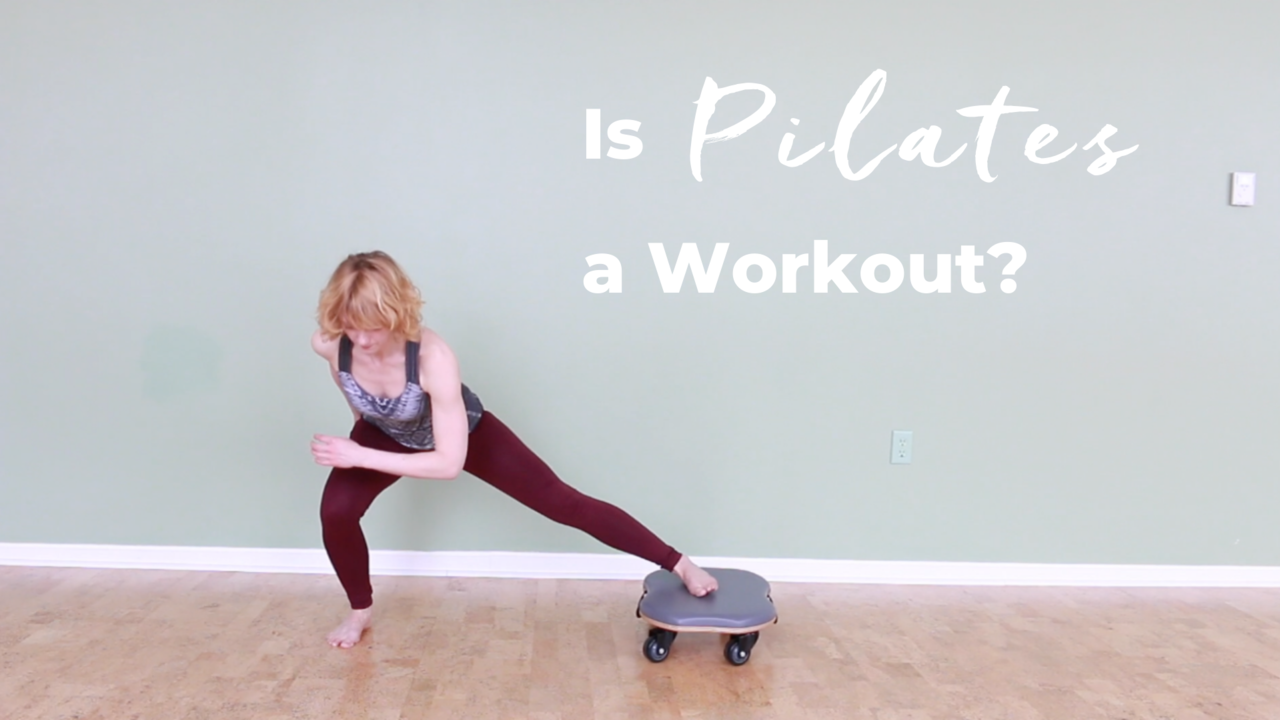Is Pilates a Workout?
May 06, 2019
Is Pilates a workout or is Pilates not a workout? This debate is not new. There has been quite a discussion around that subject for a while. Especially teachers who have been trained in the lineage of Romana Kryzanowska are often adamant that Pilates is a workout and that Pilates is supposed to challenge you and challenge your body. And I absolutely agree with that.
On the other hand, some Pilates teachers (me included) prefer small movements (at least in the beginning) at a low intensity. We invent variations and choose Pre-Pilates exercises if necessary. We see Pilates more as corrective exercise. There’s no sweating because the movements are small in an attempt to change motor control and neurological patterns. This type of Pilates session probably doesn’t feel like a workout.
So which is it? Is it supposed to be a workout or not? Here’s the truth: it depends on the student. Ta-daa! It always, always, always depends on the person you’re working with. For example, one of my current students is a swimmer. She kicks ass! She does the hardest stuff you can imagine. She pushes herself really hard. She’s not coming in to do pelvic clocks all day long. Even though if she needs that, we’ll do it. She needs to be challenged appropriately for her high level of fitness. There’s no need for me to baby her. If I did, she’d get bored. I have to consider her whole person, not just her body, but her mind as well. Ah, the mind, let’s not forget about that.
On the other hand, a student with pain and lots of compensation patterns will not benefit from a challenging workout with lots of advanced exercises because she will strengthen her compensations patterns. She needs to retrain better patterns. That means reducing the intensity of the workout to the level of the deconditioned area. For example, her hip flexors do the work of the abdominals. If she does a Teaser on the mat, she probably will use her hip flexors, not her abdominals. She will perpetuate her compensations. I’ll have to give her an easier exercise, in which she can train her abdominal wall without the use of her hip flexors. Here comes the kicker: once she understands how to use her abdominals, she will actually experience the easier exercise as a “huge workout”. She’ll be sweating without moving all that much. “How can this small movement be so much work?”
Another issue I see with the word “workout” is that it influences people’s approach to Pilates. If I think I’m going to “work out” I’m associating sweating with that and breathing heavily. I’m determined to put in 100% of my physical effort. I tell myself “just do it”. No matter how or what, I will do 20 push-ups. I’ll be threatened cheered on by my instructor to do 20 more squats, or else!
By contrast, in order to change a movement pattern in Pilates, I might have to practice only at 10-20% of my strength. That’s not what I associate with a workout. Do you?
So is it a workout or is it not a workout? Argh! Can we just avoid the word altogether? It means different things to different people. Why can’t we just say it’s Pilates. Period. The experience of Pilates is going to be different for every single person. We, teachers, will make it challenging for each person. That’s where the power and magic of Pilates lies. It honors those individual differences between each of us (#snowflakes). It’s individualized and I think that’s where it’s at: an individualized movement program that makes you a better version of yourself.
The detailed work that Pilates provides, the fine-tuning, is something you can’t find in any other form of exercise. It’s unique to Pilates, and it’s #powerful. There are so many other forms of workouts out there from boxing, the gym, exercise classes, boot camps, Crossfit, and on and on and on. Why compete with all those? Pilates can stand out by being so much more. We have a fantastic opportunity to establish Pilates as its own category. #theresnothinglikeit
What do you think?










